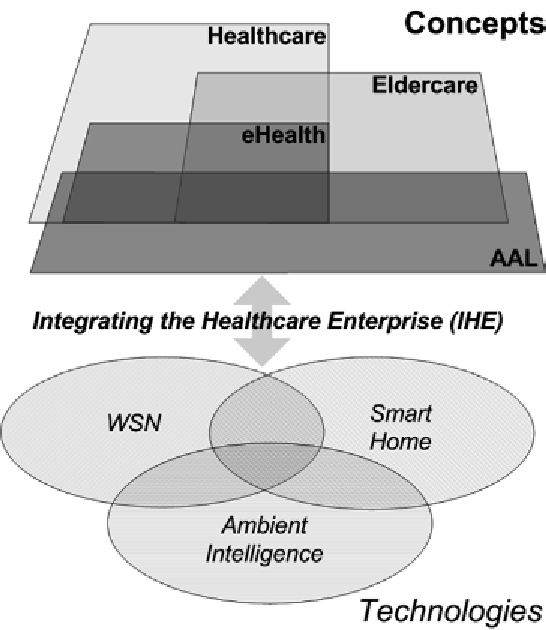Information Technology Reference
In-Depth Information
Figure 1. Big picture showing related concepts and technologies
care and patient safety (Comyn, 2007). Home
and community health services provide major op-
portunities for preventive healthcare (Jorm, Scott,
Sanja, Byles, & Kendig, 2010). These services
extend the time elderly people can remain in their
familiar environment and improve their wellbeing.
Elderly as well as chronically ill and/or vulnerable
people face problems when they interact with
health care systems that are not designed to meet
their needs (Anderson G., 2010). In the course of
caretaking, care dependent people are often be-
ing passed between different care systems: from
homecare - sometimes with support of mobile
nursing services - to the hospital and, often with
a different amount of care required, back home
or to a nursing home. They are surrounded by
a complex and disintegrated system of a huge
number of organizations which are involved in
the care process (see Figure 2).
The amount of various participants in the care
taking process leads to multiple organizational
boundaries, where different demands have to be
met by health service providers (Mayr & Lehner,
2009). To guarantee integrated care, it is inevi-
table to provide clearly defined data exchange
interfaces for all health service providers to allow
effective interdisciplinary collaboration. Thus the
goal is, to allow health professionals to monitor
and trace the medical and clinical information
flow related to a certain care dependant patient.
This leads to challenges as clinical information
systems are often proprietary applications, which
interrupts the information chain.
Current Austrian studies (Mayr & Lehner,
2008a), (Mayr & Lehner, 2009) show that there
is no effective data connection between different
care systems. Care relevant information is often
communicated inadequately or with considerable

Search WWH ::

Custom Search